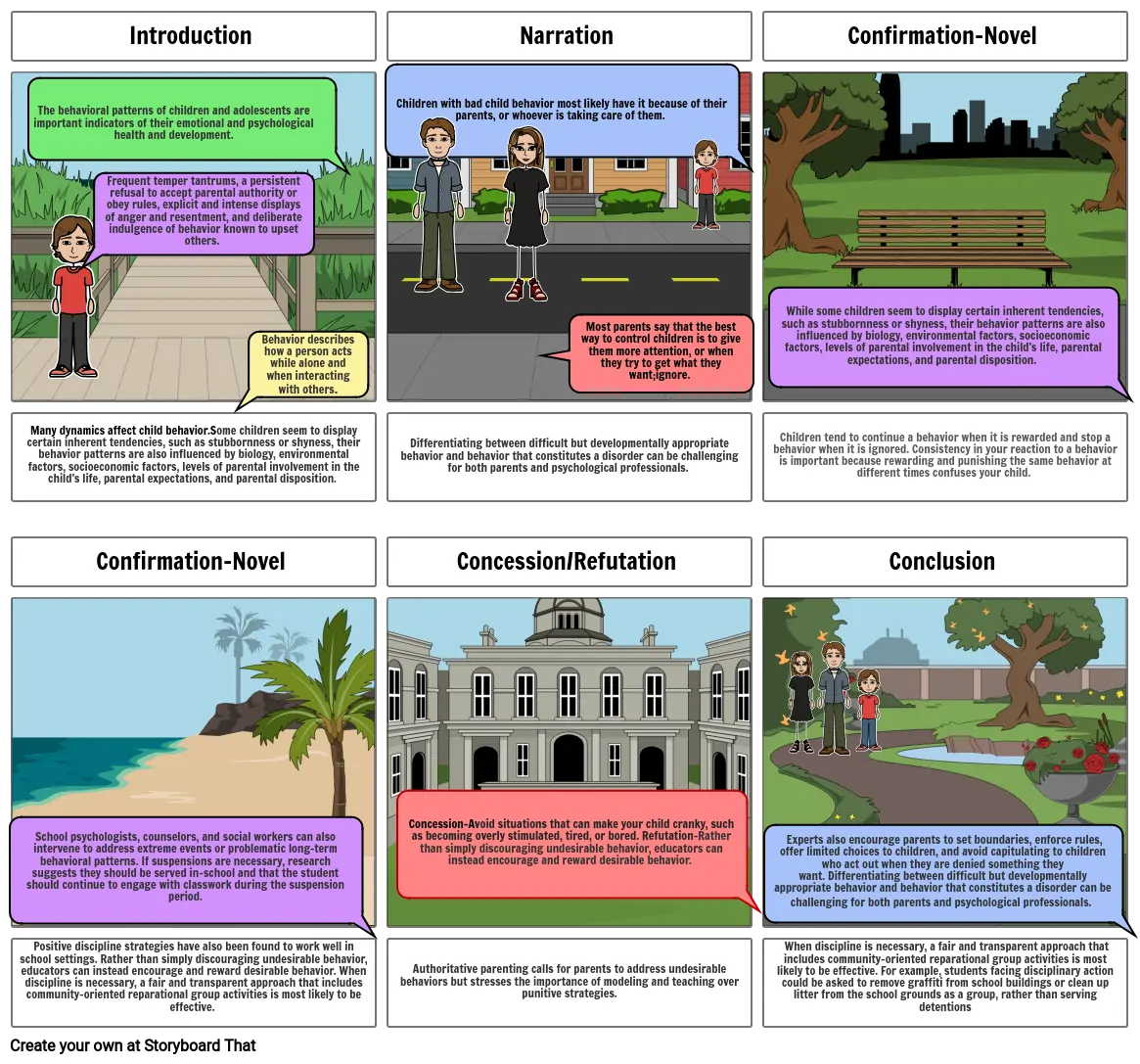Child behavior Extremely Loud and Incredibly Close

Storyboard Text
- Introduction
- The behavioral patterns of children and adolescents are important indicators of their emotional and psychological health and development.
- Frequent temper tantrums, a persistent refusal to accept parental authority or obey rules, explicit and intense displays of anger and resentment, and deliberate indulgence of behavior known to upset others.
- Behavior describes how a person acts while alone and when interacting with others.
- Children with bad child behavior most likely have it because of their parents, or whoever is taking care of them.
- Narration
- Most parents say that the best way to control children is to give them more attention, or when they try to get what they want;ignore.
- Confirmation-Novel
- While some children seem to display certain inherent tendencies, such as stubbornness or shyness, their behavior patterns are also influenced by biology, environmental factors, socioeconomic factors, levels of parental involvement in the child’s life, parental expectations, and parental disposition.
- Many dynamics affect child behavior.Some children seem to display certain inherent tendencies, such as stubbornness or shyness, their behavior patterns are also influenced by biology, environmental factors, socioeconomic factors, levels of parental involvement in the child’s life, parental expectations, and parental disposition.
- Confirmation-Novel
- Differentiating between difficult but developmentally appropriate behavior and behavior that constitutes a disorder can be challenging for both parents and psychological professionals.
- Concession/Refutation
- Children tend to continue a behavior when it is rewarded and stop a behavior when it is ignored. Consistency in your reaction to a behavior is important because rewarding and punishing the same behavior at different times confuses your child.
- Conclusion
- School psychologists, counselors, and social workers can also intervene to address extreme events or problematic long-term behavioral patterns. If suspensions are necessary, research suggests they should be served in-school and that the student should continue to engage with classwork during the suspension period.
- Positive discipline strategies have also been found to work well in school settings. Rather than simply discouraging undesirable behavior, educators can instead encourage and reward desirable behavior. When discipline is necessary, a fair and transparent approach that includes community-oriented reparational group activities is most likely to be effective.
- Authoritative parenting calls for parents to address undesirable behaviors but stresses the importance of modeling and teaching over punitive strategies.
- Concession-Avoid situations that can make your child cranky, such as becoming overly stimulated, tired, or bored. Refutation-Rather than simply discouraging undesirable behavior, educators can instead encourage and reward desirable behavior.
- Experts also encourage parents to set boundaries, enforce rules, offer limited choices to children, and avoid capitulating to children who act out when they are denied something they want. Differentiating between difficult but developmentally appropriate behavior and behavior that constitutes a disorder can be challenging for both parents and psychological professionals.
- When discipline is necessary, a fair and transparent approach that includes community-oriented reparational group activities is most likely to be effective. For example, students facing disciplinary action could be asked to remove graffiti from school buildings or clean up litter from the school grounds as a group, rather than serving detentions
Over 30 Million Storyboards Created

